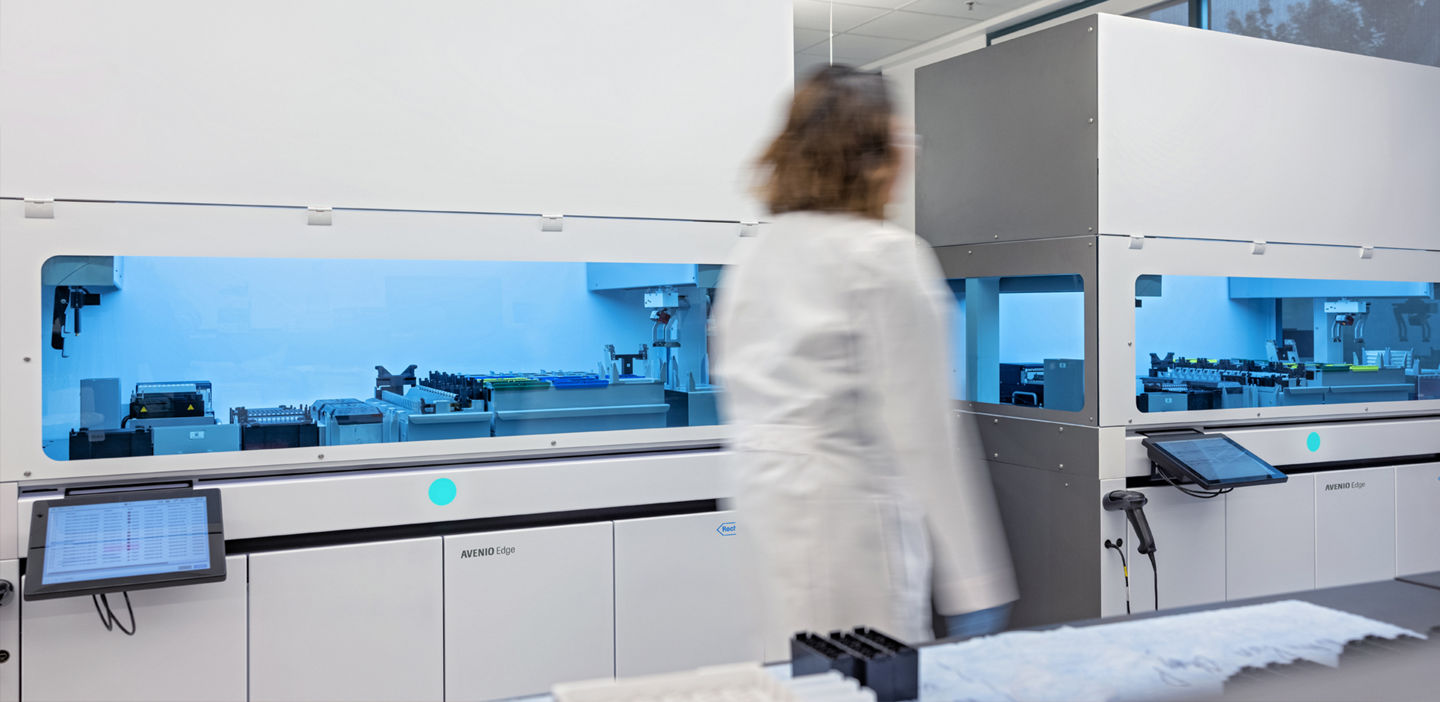Contributing lab leaders: Alison Woodworth and Charles Mathews
What Point of Care testing means for the future of the Core Lab
The changing landscape in healthcare has seen a precipitous rise in the use of point of care (POC) testing—the global market for which is poised to grow 10% per year through 2022, according to Zion Market Research.1 This is due to at least three factors, according to Lab Leader Alison Woodworth, PhD, Associate Professor of Pathology and Laboratory Medicine at the University of Kentucky:
- Rapid growth in both the range and trustworthiness of POC testing assays and testing devices is greatly increasing the number of cases in which POC testing and rapid diagnostics can facilitate patient care.
- Mergers of hospital systems into large conglomerations are creating the need for POC testing to support the efforts of central labs and central laboratory testing across many providers.
- Increased use of decentralized POC testing within the hospital and bedside testing is helping to improve turnaround times, for instance with blood gas analysis during cardiac surgery or when patients are admitted to emergency departments and urgent care clinics.
Despite the advantages of near patient testing, however, increasing use could have an equal, opposite, and unintended effect on the core lab: In stark terms, more testing outside of the lab translates to less testing within the lab. Some have seen this as a kind of emergent power struggle between POC testing and clinical laboratory testing, if not a signal of the latter's eventual decline. Moreover, there's the possibility that decentralized testing could undermine the need for a centralized authority within the health system: If physicians and nurses can conduct the medical testing that laboratorians used to provide, might there be less of a need for laboratorians, in general?
What, indeed, does POC testing mean for the future of the core lab?
Article highlights:
- Tech advancement has made point of care tests increasingly trustworthy and accurate.
- The future of point of care testing should emerge as complementary to core laboratory testing
- Need to strike a balance between near patient testing and accuracy
Sign up today to receive a free gift as well as our latest insights and more in your inbox!
Alison Woodworth, PhD
Director, Clinical Chemistry & Point of Care Testing
University of Kentucky College of Medicine
The truth is that the rise of POC testing will not, in all likelihood, cause the gradual sunset of the core lab or a lessening need for expert leadership within health systems. In fact, it may have the opposite effect. While POC testing offers unprecedented advantages to providers, especially in terms of decreased turnaround times, more convenient diagnosis, and early detection, there are still limits as to what POC testing can provide. The limitations of specific assays, for instance, may mean that, in certain circumstances, POC testing is not appropriate—a determination that lab leaders should provide.
Woodworth explains that, "Even though we use point of care in a lot of different settings, as laboratorians, I think one of our main roles is to understand the limitations of the assays and implement strategies that account for those limitations—to make sure that, even though our point-of-care testing isn't perfect, we're getting a good result for the patient to accurately treat them." While laboratorians may not be administering each POC test individually, they should drive the decision-making process and stipulate where POC testing is appropriate—ideally standardizing POC protocols for the health system.
There are many forms of highly complicated testing, such as genetic testing, which do not lend themselves easily to POC formats. In other cases, such as in cholesterol testing, POC may be unwarranted simply because rapid results aren't likely to change clinical decision-making. On the whole, POC tests tend to be more expensive than core lab tests, as the Expert Review of Molecular Diagnostics observes,2 a factor that must be considered in the overall value equation of POC testing.
Moreover, lab leaders will also have to determine the limits of decentralized testing. Home tests, for instance, may be performed by persons without any medical expertise. Test results may also be difficult for laypeople to understand without medical guidance. When do the risks outweigh the benefits? As Charles Mathews, Vice President of Boston Healthcare, explains, "The farther you get away from the centralized lab, the more questions you have about quality assurance, and you kind of get this trade-off between the turnaround time and centralization. I think we're a ways away before I'm comfortable putting a lot of things, but especially molecular-type things, into the home and let people run with it themselves." For now, we know that POC testing has been migrated to the home and found to deliver clinical benefits as well as patient convenience in some instances. PT/INR Test for patients on blood thinners is just one example. POC testing also has an important role to play when it comes to infectious disease testing. The success and value of more complex POC testing remain to be seen.
As healthcare evolves, decentralized methods like POC testing will surely play an increasingly large role in the provision of care, especially when it comes to emergency medical services, but they will only deepen the need for lab experts to determine when POC testing is appropriate, in which situations, and at what cost.
In all reality, there is no power struggle between POC testing and the central lab—only a weighing of options, by experts. "I think what we're looking for is really balance," says Mathews.
Charles Mathews
Principal
ClearView Healthcare Partners
Want to be the first to receive the latest insights from industry leaders? Sign up for our newsletter.

